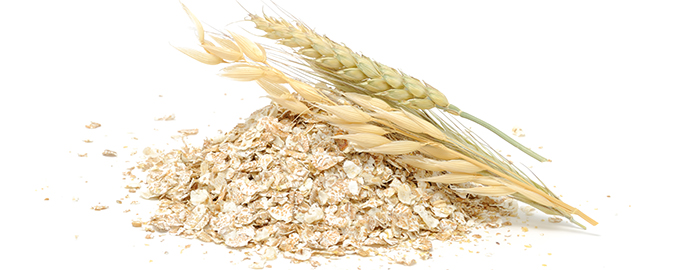Fibres make a difference
The diet in the western world is characterised as being low in fibre and high in fat and refined carbohydrates. This unhealthy lifestyle increases the risks for a number of lifestyle diseases. This is why scientists have to think of alternative ways for obtaining all the benefits of fibre without having to consume large quantities of carrots and rye bread.

In the recently completed AU project ButCoIns funded by the former Danish Council for Strategic Research (now Innovation Fund Denmark), researchers have looked at the beneficial effects on gastrointestinal health of a diet rich in fibre, and how different kinds of fibre affect the body’s metabolism. Fibre is considered a healthy component of the diet because it provides food for bacteria in the gut. This increases the production of short-chain fatty acids, and one of them, butyrate, is particularly beneficial for the lining of the gastrointestinal lining (mucosa). There are also indications that butyrate may affect insulin sensitivity.
Project leader and professor at AU, Knud Erik Bach Knudsen, explains:
- We have used in-vitro cell experiments and experiments on pigs to examine how you can use a variety of fibre sources to stimulate the production of short-chain fatty acids, especially the production of butyrate in the gastrointestinal tract. In the pig experiments we also looked at how different diets affect the parameters for gut and metabolic health. The knowledge obtained from pig experiments was subsequently used for the design of a study on humans.
The importance of diet
The human study was carried out at Aarhus University Hospital, where they examined how diets low and high in fibre, respectively, affect the production of butyrate in the gut. Seventeen persons completed the study. They were all obese and had metabolic syndrome – a preclinical condition which increases the risk of cardiovascular disease and diabetes.
At the start of the experiment a number of samples were taken, and the test subjects were then divided into two groups that were given the two diets over a four-week period. One group was given a healthy, high-fibre diet and the other was given a standard western diet low in fibre and high in fat and refined sugars. After four weeks, a number of samples were again taken, including biopsies from the intestine. This was followed by a so-called wash-out period and the groups then switched diets for the following four-week period, so that all test subjects were subjected to both diet types.
- We have very convincingly in the experiments with pigs and humans demonstrated that we were able to increase butyrate production. We also found that it was possible to influence a number of parameters related to gastrointestinal health, whereas the influence on peripheral parameters such as insulin sensitivity was less certain. For the human study this could have something to do with the design and length of the study. It would probably have been an advantage if the test persons had been on a standardized diet before the experiment started, says Knud Erik Bach Knudsen.
Exciting future prospects for healthier foods
LANTMÄNNEN, the producer of a number of breads, flours and breakfast cereal brands such as AXA and Schulstad, participated in the project and provided different kinds of foods for the human subjects such as breads, pancakes and pasta.
Nutrition Manager Lovisa Martin Marais from Lantmännen explains:
- Intestinal Health is a young research area that is constantly evolving and we are interested in learning more about the intestinal system and in particular how cereal products may affect gut health. It is important to communicate about health properties to enable consumers to make informed choices. In order to communicate about health properties, these first have to be approved by EFSA (European Food Safety Authority). It is therefore important for future studies that they are designed to match EFSA requirements, so that society can benefit from the research taking place.
DuPont Nutrition Biosciences also participated in the project, and Jens Frisbæk Sørensen, R&D Manager at DuPont Industrial Bioscience, Denmark, here explains the background for the enzyme manufacturer’s participation:
- In DuPont we have a patent portfolio on the technology used in this project. We have been working since 2000 on modifying bran in order to increase its good properties. We started this work when there was growing awareness of the link between lifestyle diseases and diet and the first wholegrain trends were born. We produce enzymes, and we decided to participate in the project to obtain further knowledge about what kind of technology is needed. It is our hope that the big food manufacturers can see the potential in turning by-products such as cereal bran into functional foods that can boost health. The conclusions of the animal experiments were very clear, and we found the results were so interesting that we decided to also take part in new study that follows up on the experiences from the ButColns project.
The gut in focus
There is currently a growing awareness of the importance of our gastrointestinal system for our health. The book " Gut: The Inside Story of Our Body's Most Under-Rated Organ" written by the German medical student Giulia Enders has become a bestseller in Germany and was also on the bestseller list in Denmark last year. In 2017 the Medical Museion – a research unit under the University of Copenhagen – will open the exhibition “Mind the Gut” on the link between the gut, microbes and the brain.
Seminar on butyrate and gut health
On 2 March AU Foulum held a seminar where results from the ButColns project were presented. The seminar was held at the Agro Food Park in Aarhus. See the presentations from the meeting here.
Contact
Professor Knud Erik Bach Knudsen
Department of Animal Science, Aarhus University
Mail: knuderik.bachknudsen@anis.au.dk
Telephone: +45 87158063
Mobile: +45 20647598
